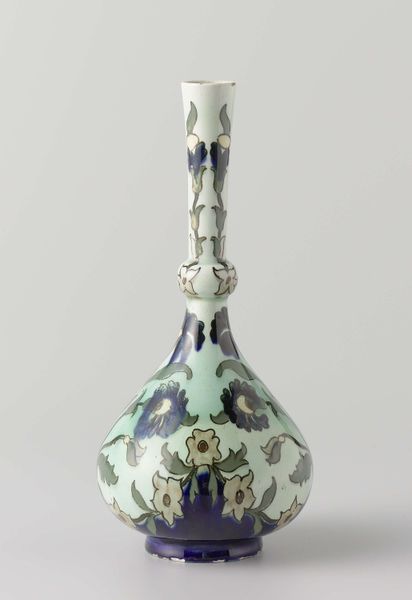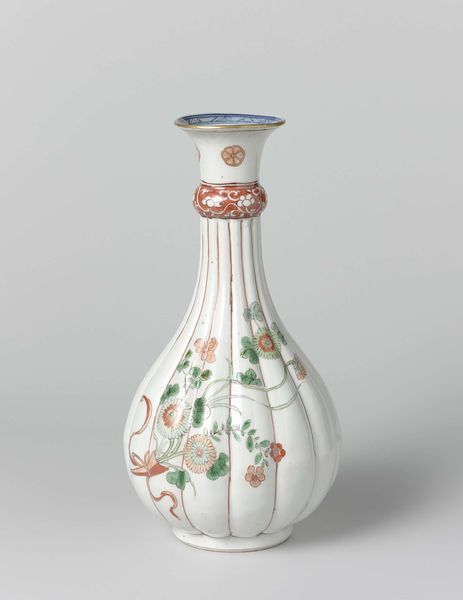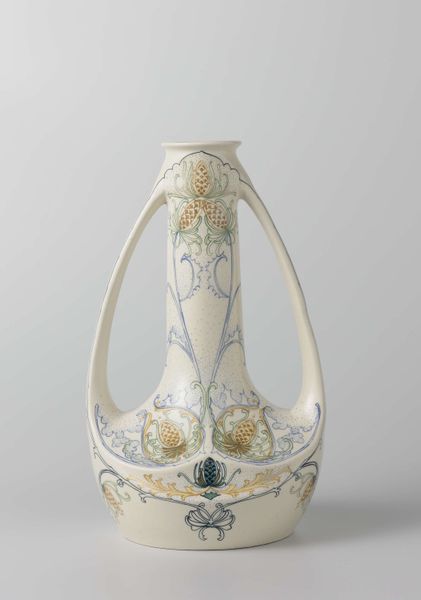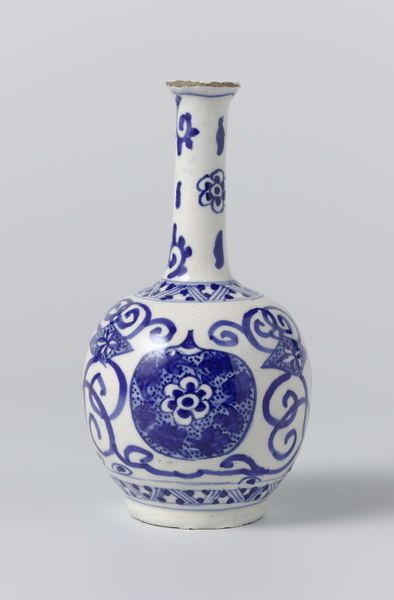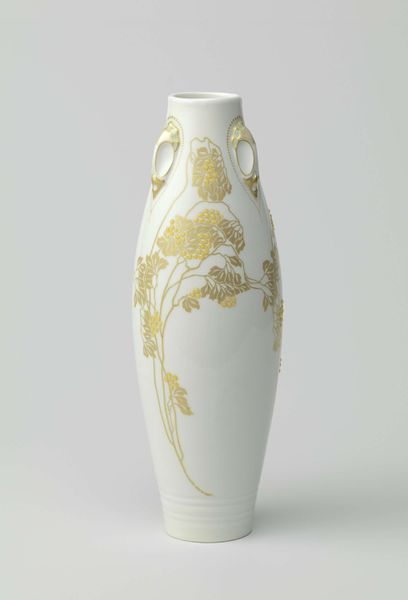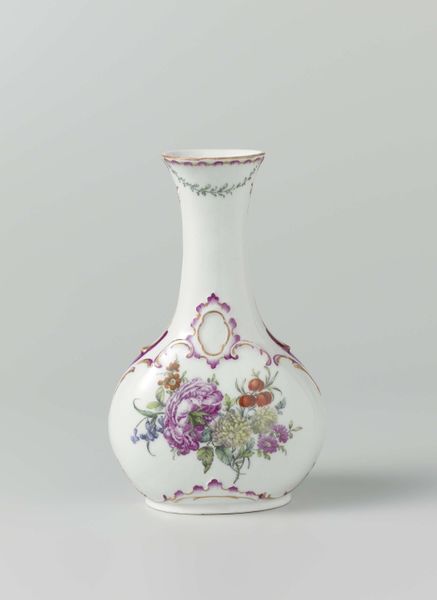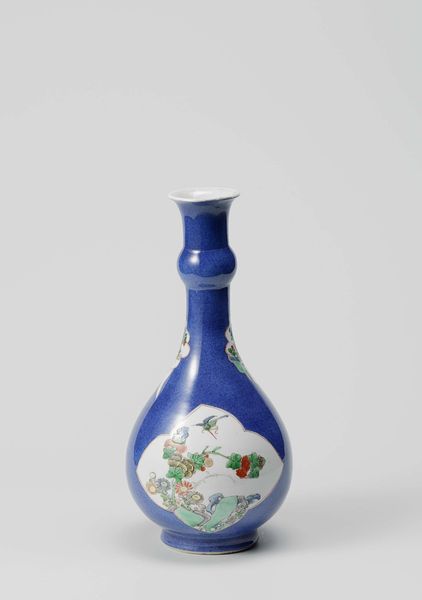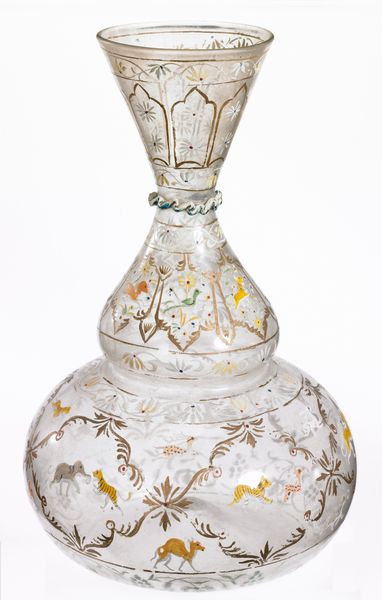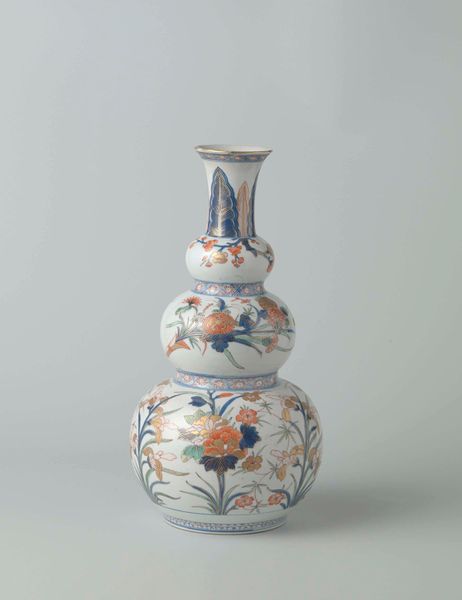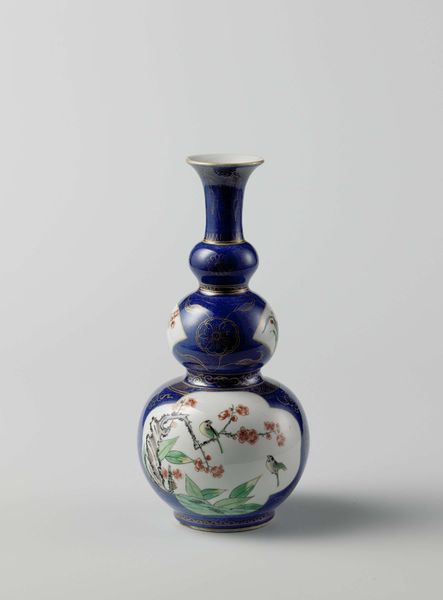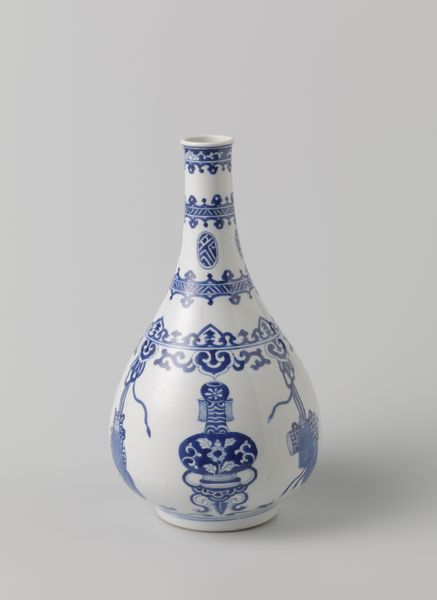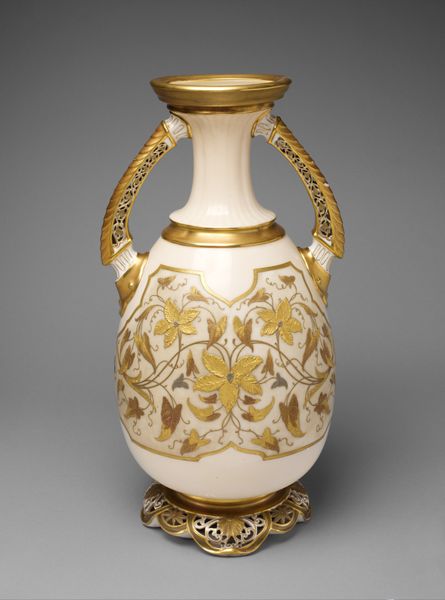
ceramic, porcelain, sculpture
#
ceramic
#
jewelry design
#
flower
#
porcelain
#
sculpture
#
ceramic
#
decorative-art
#
rococo
Dimensions: H. 8 1/4 in. (21.0 cm.)
Copyright: Public Domain
Editor: This gorgeous porcelain bottle, dating from 1725 to 1735 and made by the Meissen Manufactory, features these really delicate floral decorations. I am struck by how this object straddles the line between fine art and functional item, and wonder about its purpose. What historical context might illuminate our understanding? Curator: It's fascinating, isn't it? Meissen porcelain represents a key moment in European history – the breaking of China’s monopoly on porcelain production. The pursuit of porcelain was intrinsically tied to European trade ambitions and the desire to emulate and even surpass Eastern luxury goods. This bottle, though seemingly 'decorative,' represents a whole political economy. Who had access to such luxury objects, and what did it signify socially? Editor: So owning something like this signaled wealth and status, not just appreciation for beauty? Curator: Absolutely. And the style itself, Rococo, flourished in aristocratic circles. The light, asymmetrical floral patterns contrast the strict, symmetrical lines, expressing a sense of playful elegance preferred by wealthy patrons. Editor: Were these kinds of porcelain works collected in specific ways? Did they furnish public spaces? Curator: Predominantly private spaces, or specifically designed cabinets within wealthy homes meant to showcase their collections –think of it as an early form of branding and display of affluence. Porcelain rooms were a major fashion statement. How does that inform your view of this object now? Editor: That certainly changes how I see it. Knowing it was essentially a status symbol makes me reconsider those delicate flowers. I guess luxury can carry complex cultural messages! Curator: Precisely! And studying objects like these allows us to analyze that intersection of art, commerce, and societal power.
Comments
No comments
Be the first to comment and join the conversation on the ultimate creative platform.
